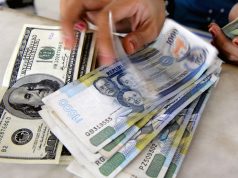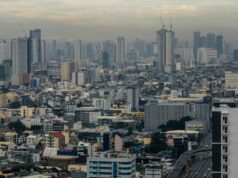Inclusion and delusion in TRAIN
What is the meaning of inclusion in TRAIN?
If we understand acceleration to be sustained rapid increase in per capita income, what is the definition of inclusion that is consistent? There is such thing as inclusive poverty. Surely that is not what the Tax Reform for Acceleration and Inclusion is all about.
There are two flavors of inclusion: one is reduced income inequality; the other is reduced poverty incidence. They are not the same; nor does one necessarily follow the other. So they require different policy responses.
The Millennium Development Goals (MDGs) that started in 1990 and ended in 2015 privileged poverty incidence reduction (MDG1). The successor Sustainable Development Goals (SDGs) starting in 2016 targets zilching the same. Income inequality? Income inequality and its usual vessel, the GINI ratio, does not earn pride of place. A rise in the GINI means income inequality has worsened and, thus, adjudged worse. But worse on what count?
The GINI ratio became compelling because the Inverted U Hypothesis of S. Kuznets claimed that it first rises with rising per capita income at low levels, reaches a peak at a higher level (at $5,650 sic Egawa, 2013) and falls after that. Despite the Nobel Prize for S. Kuznets, the evidence started to mount against it. The consensus now is that the inverted U relation does not exist. About 80% of the global population live in economies with GINI ratios of around 40% and they constitute high income, middle income, and low income countries.
T. Piketty (2014) calls the inverted U a “fairy tale,” dropped the GINI altogether and employed instead the share of the top decile and the top 1%. Piketty showed that the share of the highest class increases without limit in mature high-income economies. Without the Kuznets Inverted U, the GINI ratio lost its economic mojo.
The MDG initiative succeeded in halving global poverty by 2015 but three-fourths of the gain occurred in Mainland China. Mainland China reduced poverty incidence from 60% in 1990 to 4% in 2015 pulling upwards of 600 million Chinese from abject poverty. The People’s Republic of China attained the mega poverty reduction by a very high investment rate (about 45% of GDP) fueling an average of 10% growth for better than two decades. But it was not just sustained rapid growth; it was quality growth: the focus was on the manufacturing — which flooded markets abroad with Chinese goods — helped along in no small way by a weak yuan or, as D. Trump puts it, “currency manipulation.”
And manufacturing spawned those millions of stable jobs which dragged people out of poverty.
Vietnam’s trajectory was similar: Vietnam’s manufacturing sector outgrew its Service sector with the same poverty reduction result (from 50% in 1990 to < 5% in 2012).
By contrast, the Philippines’ engine of growth in the MDG era was the service sector which outgrew manufacturing (Figure 1).

China and Vietnam became super-achievers in poverty reduction in the MDG era. The Philippines by contrast failed to cut in half its poverty incidence — this stood at 26% in 2010 from 34.4% in 1990 (Figure 2).

What happened to PRC’s GINI ratio in the meantime? The GINI ratio of PRC rose — yes, rose — from 31% then to 42% today. Mainland Chinese dollar billionaires emerged. Higher income inequality seemed to have helped rather than hurt poverty reduction!
Had Deng Xiaoping scrupled over a 11% rise in income GINI, the greatest economic transformation in human history would not have happened. Deng had decided to throw out the jaded Marxist romance with equity in the pursuit of growth and efficiency.
Meanwhile, the socialist bloc, those economies that worshipped equity ahead of efficiency, collapsed in 1989. Deng Xiaoping’s China did not collapse because in a show of wisdom and courage, Deng decided to radically change China’s course in 1976: he embraced the market, free enterprise and foreign investment.
By 1988, Foxconn from Taiwan had set up shop on the way to becoming the world’s second largest private employer (1.3 million) after Walmart.
The thrust of TRAIN is to raise the revenue required to bankroll the envisioned investment-led growth and 8% of GDP infrastructure spending. The envisioned harvest is massive poverty reduction in the SDG era. Realpolitik demands that the pain of adjustment today be not unduly heaped upon the poorest of the poor. The DoF TRAIN is painstaking in this regard. Its original net revenue target of P200-billion was trimmed down to P134-billion to accommodate these exigencies with tax reductions and earmarked givebacks. But TRAIN to succeed must first raise the requisite net revenue through the fuel excise tax, the sugar-based beverage tax, the vehicle tax, and the plugging of VAT loopholes.
Senate Bill 1592 stands the DoF TRAIN’s wisdom and courage on its head. Instead, it touts “higher take home” today at the cost of future prosperity. It has retained 31 of 70 VAT loopholes in the DoF program. Some pundits have applauded Senate Bill 1592 as an improvement because it occasions some meaningless itsy-bitsy fall in the hapless GINI. They applaud what effectively proposes to create earmarked entitlements without the wherewithal for the requisite investments to finance such entitlements.
Senate Bill 1592 threatens to derail TRAIN.
If the net revenue gain of the final compromise bill is no improvement on Senate Bill 1592, the economy will be better served by a veto and by just passing the sin tax adjustment for higher revenue.
Every reform if meaningful will extract some pain and to pretend meaningful reform can be rendered painless is delusional. Surely, there is more wisdom and courage in the Senate than has been shown so far. We hope and pray.
Raul V. Fabella is a retired professor of the UP School of Economics and a member of the National Academy of Science and Technology. He gets his dopamine fix from hitting tennis balls with wife Teena, bicycling and struggling with the guitar where he spells rank amateurism.



